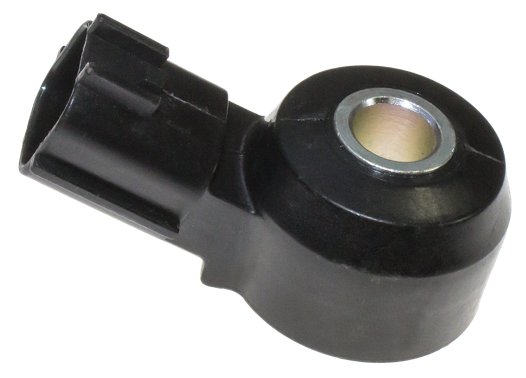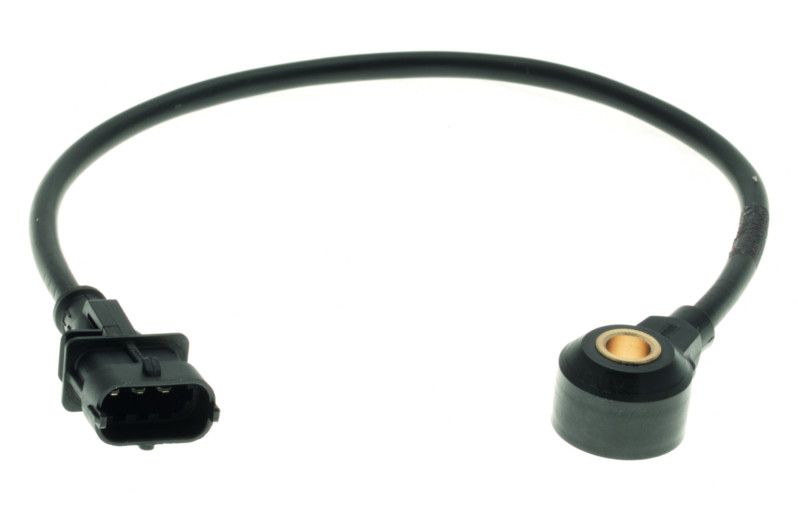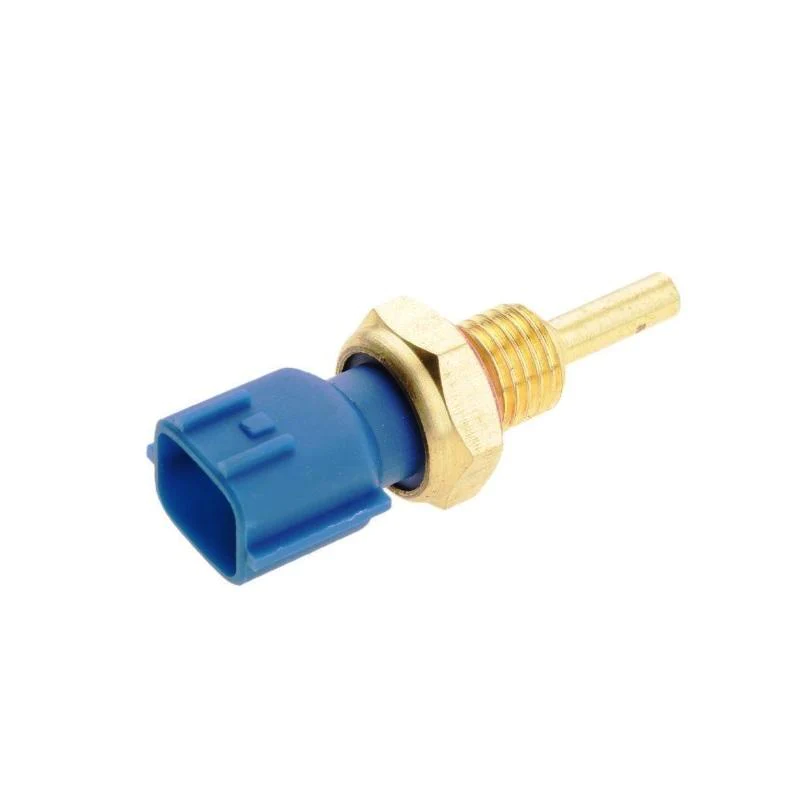Learn about the different types of sensors used in Automobiles.
- Dec 18, 2023
- 6 min read
Updated: Sep 6
Automobiles rely on various types of sensors to monitor and control different systems. Learn about the different types of automobile sensors and their functions in this informative guide.
A car sensor is an electronic component that gathers real-time data from a vehicle's various systems and relays it to the Engine Control Unit (ECU). The ECU acts as the car's "brain," processing this information to make continuous adjustments, ensuring everything from fuel delivery to emissions control operates within ideal parameters. In short, sensors are the car's eyes, ears, and nerves, providing crucial feedback that allows the ECU to keep the vehicle running smoothly.

What do sensors monitor?
Engine performance: Fuel-air mixture, ignition timing, and engine speed.
Emissions: Levels of harmful gases in the exhaust.
Safety systems: Anti-lock brakes, traction control, and airbags.
Driver assistance: Parking and lane-keeping assistance.
Convenience: Wiper speed, and climate control.
📊 Essential Automotive Sensors and Their Functions
Here is a list of some of the most critical sensors found in modern vehicles.
Engine & Performance Sensors
These sensors are vital for the engine's operation, fuel efficiency, and power output.
Oxygen (O2) Sensor: Measures the amount of oxygen in the exhaust gases. The ECU uses this data to adjust the air-to-fuel ratio, ensuring efficient combustion and lower emissions.
Mass Air Flow (MAF) Sensor: Measures the volume and density of air entering the engine. This information is used by the ECU to calculate the correct amount of fuel to inject. A faulty MAF sensor can lead to poor fuel economy and rough idling.
Manifold Absolute Pressure (MAP) Sensor: An alternative to the MAF sensor, it measures the air pressure within the intake manifold. This data helps the ECU determine the engine load and adjust fuel delivery and ignition timing accordingly.
Crankshaft Position (CKP) Sensor: Tracks the position and rotational speed of the crankshaft. This is crucial for synchronizing the fuel injection and ignition timing.
Camshaft Position (CMP) Sensor: Works in tandem with the CKP sensor to determine the precise position of the camshaft. The ECU uses this to calculate the exact timing for fuel injection into each cylinder.
Knock Sensor: Detects abnormal, high-frequency vibrations (or "knocking") within the engine. If knocking is detected, the ECU retards the ignition timing to protect the engine from damage.
Engine Coolant Temperature Sensor (ECT): Monitors the temperature of the engine coolant. This data helps the ECU regulate fan operation and adjust the fuel mixture for cold starts.
Throttle Position Sensor (TPS): Measures the opening angle of the throttle valve. This tells the ECU how much air is entering the engine, allowing it to provide the right amount of fuel.
Exhaust Gas Temperature (EGT) Sensor: Measures the temperature of the exhaust gases to prevent engine and component overheating, particularly in turbocharged and diesel engines.

Vehicle Speed & Safety Sensors
These sensors contribute to the car's safety, stability, and navigation systems.
Vehicle Speed Sensor (VSS): Measures the rotational speed of the wheels or transmission output shaft to determine the vehicle's speed. This data is used by the speedometer and other systems like cruise control and ABS.
Wheel Speed Sensor: Found in each wheel, this sensor is a critical component of the Anti-lock Braking System (ABS). It monitors the rotational speed of each wheel to detect wheel lock-up during hard braking and allows the ABS to modulate braking pressure.
Parking Sensor: These ultrasonic or electromagnetic sensors are mounted on the bumpers. They use sonar to detect obstacles and alert the driver, preventing collisions while parking.
Comfort & Convenience Sensors
These sensors enhance the driving experience.
Rain Sensor: Mounted on the windshield, it uses infrared light to detect water droplets. When it senses rain, it automatically activates the windshield wipers and adjusts their speed according to the precipitation intensity.
Flex Fuel Sensor: Found in vehicles that can run on ethanol-gasoline blends, this sensor measures the percentage of ethanol in the fuel. The ECU then adjusts the fuel injection and ignition timing to optimize performance for the specific fuel mix.
Troubleshooting Common Sensor Issues
While most sensors are built to last, they can fail over time due to wear, electrical issues, or physical damage. A failing sensor often gives clear warning signs. Knowing what to look for can save you from costly repairs and improve your vehicle's performance.
Common Symptoms of a Faulty Sensor:
Check Engine Light: This is the most common and obvious sign. When the ECU detects a reading that is out of its normal range, it will illuminate the Check Engine Light and store a diagnostic trouble code (DTC). An OBD-II scanner can be used to read this code and pinpoint the exact sensor problem.
Poor Fuel Economy: A faulty oxygen or MAF sensor can cause the ECU to use an incorrect air-to-fuel mixture, leading to the engine running "too rich" (using too much fuel) and decreasing your gas mileage.
Rough Idling or Stalling: Incorrect data from a sensor like the MAF, TPS, or crankshaft position sensor can cause the engine to misfire or run unevenly, particularly when the car is stopped or idling.
Hesitation or Poor Acceleration: If a sensor isn't providing the right data on engine load, the ECU may not be able to adjust fuel and spark timing correctly, leading to a noticeable lack of power when you press the accelerator.
Unusual Engine Noises: A malfunctioning knock sensor might fail to detect engine knocking or pinging, which can cause significant damage if not addressed.
If you suspect a sensor issue, the best first step is to use an OBD-II scanner. For more complex issues, a professional mechanic can perform a multi-meter test on the sensor's wiring and connections to confirm the fault.
🤖 The Future of Automotive Sensors: From EVs to Self-Driving Cars
As vehicles become more electrified and automated, the role of sensors is expanding far beyond just engine management.
Sensors in Electric Vehicles (EVs)
While EVs don't have traditional engine sensors like MAF or Oxygen sensors, they rely on a new set of critical sensors to manage their unique systems.
Battery Management System (BMS) Sensors: These sensors monitor the voltage, current, and temperature of individual battery cells. This is crucial for managing the battery's health, preventing overheating, and optimizing charging and discharging cycles.
Rotor Position and Speed Sensors: These are essential for controlling the electric motor. They provide the ECU with precise data on the motor's speed and position, which is used to adjust the power delivery and ensure smooth, efficient operation.
Current Sensors: High-power current sensors are used to monitor the flow of electricity between the battery and the electric motor, playing a key role in energy efficiency and safety.
Sensors in Autonomous Vehicles (AVs)
Self-driving cars are essentially mobile sensor platforms. They use a combination of technologies to create a 360-degree virtual map of their surroundings. This is often referred to as "sensor fusion," where data from multiple sensors is combined to provide a more accurate and robust picture of the environment.
LiDAR (Light Detection and Ranging): Uses laser pulses to create a detailed, high-resolution 3D map of the car's surroundings. It's highly effective at detecting objects and their distance, even in low light.
RADAR (Radio Detection and Ranging): Emits radio waves to detect the distance, speed, and direction of other objects, particularly vehicles. It is excellent in adverse weather conditions like rain and fog.
Cameras: High-resolution cameras are used to recognize objects, read traffic signs and signals, and detect lane markings. They provide the "eyes" for the autonomous system.
Top 5 Most Important Sensors in Your Car
While all sensors have their purpose, some are more critical for daily driving and safety.
Oxygen Sensor: Directly impacts fuel economy and emissions. A bad O2 sensor can significantly increase fuel consumption and cause your car to fail an emissions test.
Crankshaft Position Sensor: This sensor is the backbone of your engine's timing. Without it, your car may not start or could stall unexpectedly.
Mass Air Flow (MAF) Sensor: A primary input for the ECU to calculate the correct fuel mixture. A faulty MAF sensor can lead to a range of performance issues, from rough idling to poor acceleration.
Engine Coolant Temperature Sensor: Prevents your engine from overheating. A failure can lead to catastrophic engine damage.
Wheel Speed Sensor: This sensor is the foundation of your anti-lock braking (ABS) and traction control systems, directly contributing to your vehicle's safety and stability.
Frequently Asked Questions (FAQ)
Q: How many sensors does a modern car have? A: A typical modern car can have anywhere from 60 to over 100 sensors, and this number is constantly growing with the rise of new technologies in EVs and autonomous vehicles.
Q: Can I drive my car with a bad sensor? A: While some minor sensor issues might allow the car to run, it is not recommended. Driving with a faulty sensor can lead to decreased fuel economy, poor performance, and even serious engine damage over time.
Q: How much does it cost to replace a car sensor? A: The cost can vary widely depending on the sensor. Some are inexpensive and easy to replace, while others, particularly those in luxury or performance vehicles, can be very costly due to their location and complexity.






























































Comments